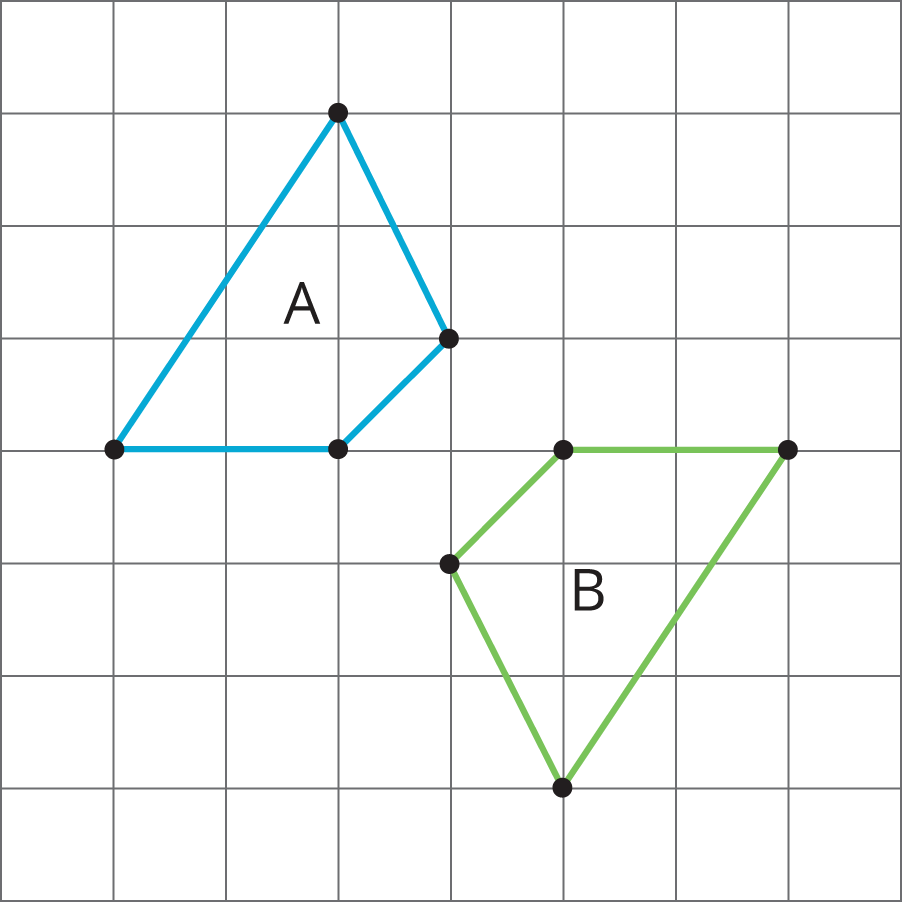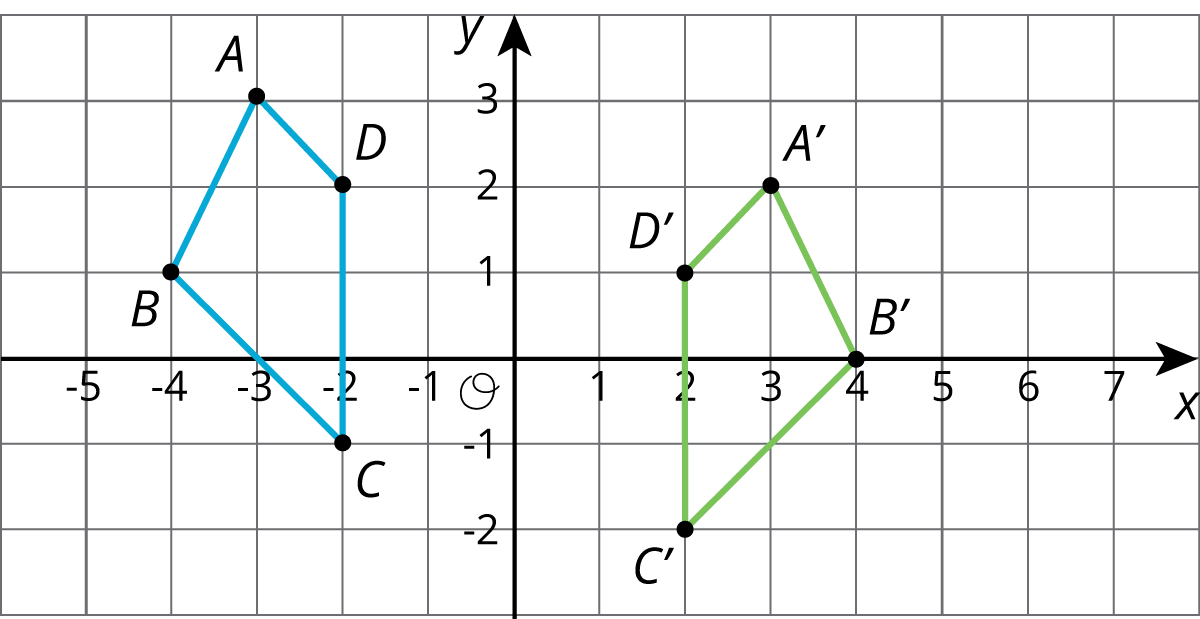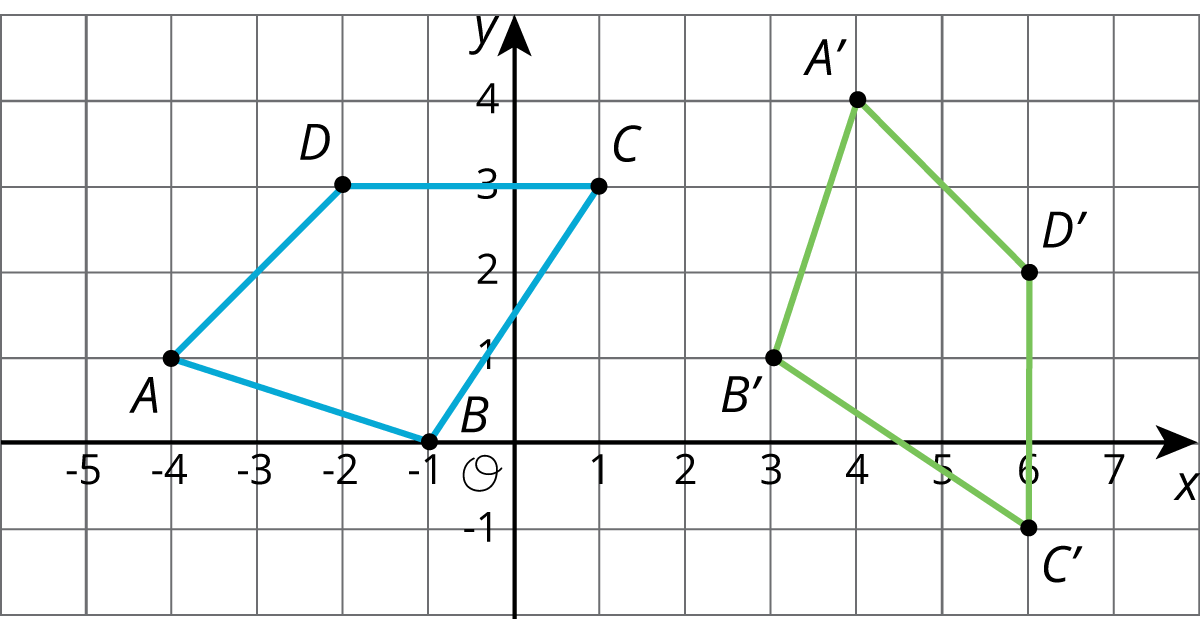Lesson 8
Rotation Patterns
Let’s rotate figures in a plane.
Problem 1
For the figure shown here,
- Rotate segment \(CD\) \(180^\circ\) around point \(D\).
- Rotate segment \(CD\) \(180^\circ\) around point \(E\).
- Rotate segment \(CD\) \(180^\circ\) around point \(M\).
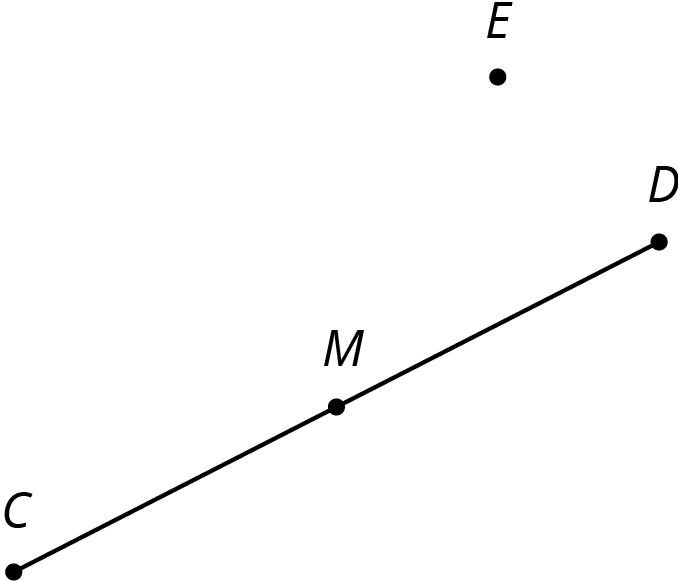
Problem 2
Here is an isosceles right triangle:
Draw these three rotations of triangle \(ABC\) together.
- Rotate triangle \(ABC\) 90 degrees clockwise around \(A\).
- Rotate triangle \(ABC\) 180 degrees around \(A\).
- Rotate triangle \(ABC\) 270 degrees clockwise around \(A\).
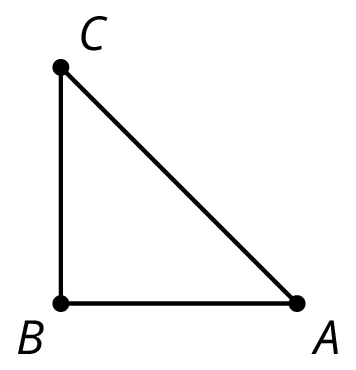
Problem 3
Each graph shows two polygons \(ABCD\) and \(A’B’C’D’\). In each case, describe a sequence of transformations that takes \(ABCD\) to \(A’B’C’D’\).
Problem 4
Lin says that she can map Polygon A to Polygon B using only reflections. Do you agree with Lin? Explain your reasoning.
